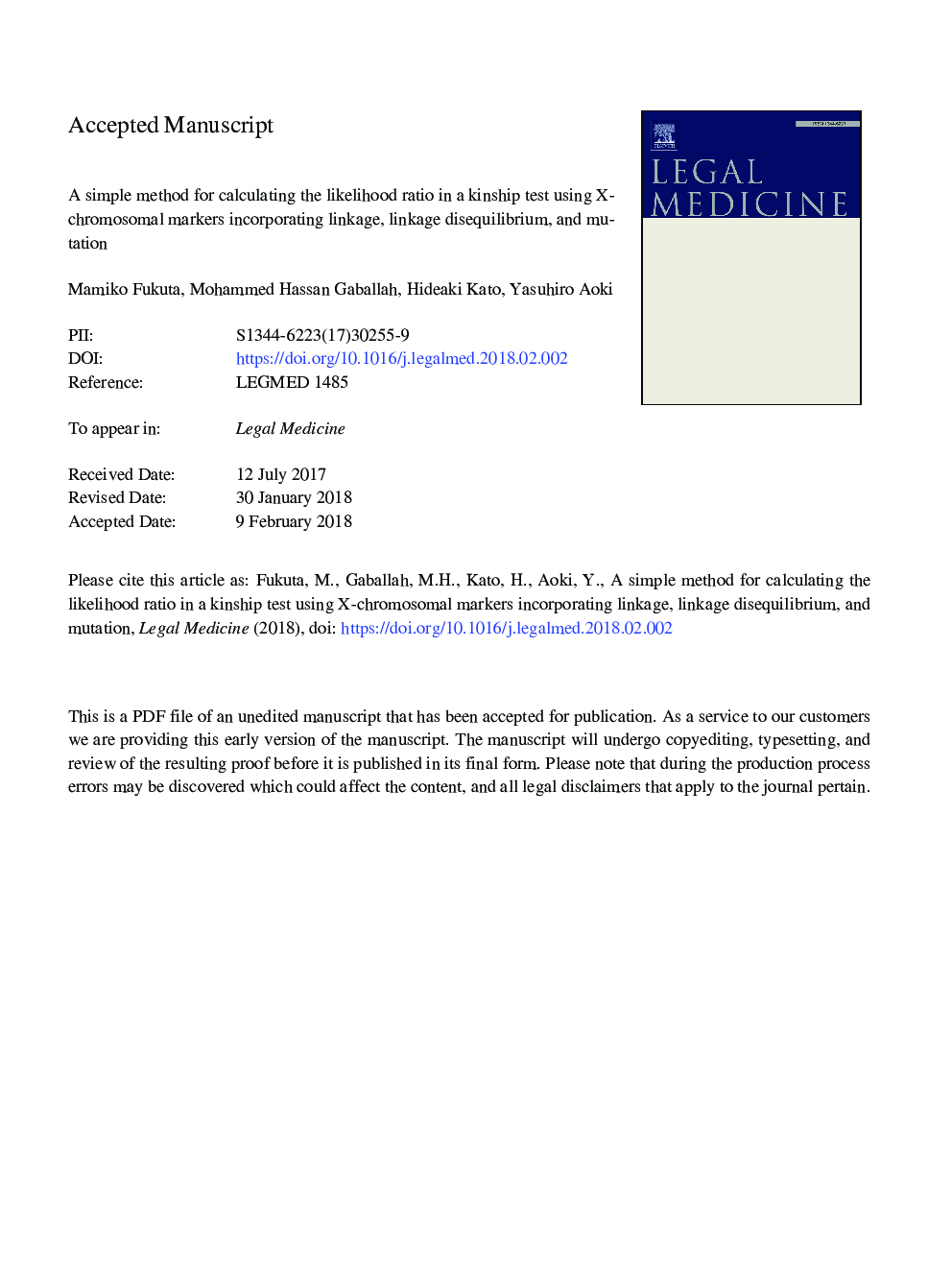| Article ID | Journal | Published Year | Pages | File Type |
|---|---|---|---|---|
| 6555263 | Legal Medicine | 2018 | 52 Pages |
Abstract
X-chromosomal short tandem repeats (X-STRs) are useful for personal identification and kinship tests. However, it has not yet been fully established how to incorporate linkage and linkage disequilibrium (LD) into the calculation of the likelihood ratio (LR). In this paper, we describe a simple calculation method of LR for X-STRs that incorporated linkage, LD, and mutations. Initially, Japanese population data of 27 X-STRs (DXS6807, DXS9902, DXS6795, DXS6810, DXS10076, DXS10077, DXS10078, DXS10162, DXS10163, DXS10164, DXS7132, DXS981, DXS6800, DXS6803, DXS6809, DXS6789, DXS6799, DXS7424, DXS101, DXS7133, GATA172D05, DXS10103, HPRTB, GATA31E08, DXS8377, DXS10147, and DXS7423) were collected from 748 unrelated individuals to estimate the influence of LD. Significant LD was observed on six pairs of loci. Subsequently, using the population data, a simulation study was performed to evaluate the validity of the present calculation method for LR in cases of father-daughter, full-sisters, paternal half-sisters, maternal half-sisters, and unrelated pairs of females (FD, FS, PHS, MHS, and UR, respectively). As a result, the distribution of LR among FD was completely separated from that among UR. In the sibship test, 98.6% of FS and 98.0% of PHS surpassed the maximum value of UR in combined LR. Even in the FS versus MHS setting, 60.5% of FS had a higher LR than any MHS. We conclude that the present model is powerful in discriminating the relationship and is able to obtain a reasonable LR with fewer computations.
Related Topics
Physical Sciences and Engineering
Chemistry
Analytical Chemistry
Authors
Mamiko Fukuta, Mohammed Hassan Gaballah, Hideaki Kato, Yasuhiro Aoki,
